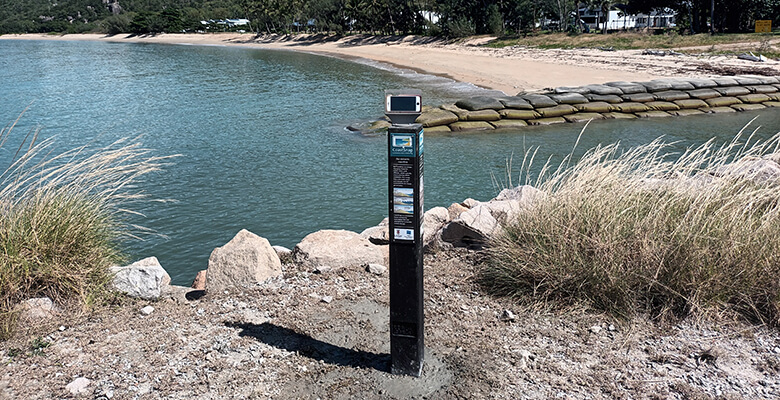What’s happening?
Visitors and locals on Magnetic Island can now take part in a live citizen science project to monitor the changing coastline, thanks to two new CoastSnap stands being installed at Nelly Bay and Geoffrey Bay.
The Nelly Bay stand is already operational, while the Geoffrey Bay stand is expected to be in place this July. Participants simply take a photo of the beach from the stand and upload it via a free app or social media to contribute to a growing community-led database.
Why it matters
Magnetic Island’s beaches face ongoing environmental pressures such as erosion and habitat loss. These beaches are also critical nesting grounds for flatback turtles, a species listed as vulnerable under the Australian Commonwealth’s Endangered Species Protection Act.
As Acting Mayor and division three representative Ann-Maree Greaney explained, “Storms, tides and people can all impact our beaches, wildlife and vegetation, so it’s important we keep an eye on the health of these areas.”
“With the installation of the CoastSnap stands, our teams and local organisations like Envite will be able to collect data on the ways in which our coastlines are changing over time.”
Local Impact
The project not only empowers the community but also directly supports local conservation and coastline management efforts. Nelly Bay and Geoffrey Bay both experience major erosion, with Nelly Bay requiring annual sand replenishment to maintain its beach profile.
Importantly, both bays serve as key nesting sites for flatback turtles, reinforcing the critical need for ongoing coastal monitoring.
By the numbers:
-
Nelly Bay requires annual sand replenishment to combat major erosion and maintain the beach’s usability and ecological balance.
-
Flatback turtles, listed as ‘vulnerable’, rely on both bays for nesting, making their protection a conservation priority.
-
Two new CoastSnap stands—at Nelly Bay (operational) and Geoffrey Bay (coming July)—will provide consistent long-term coastal data.
Zoom In
Envite regional manager for North Queensland, Natasha Rodwell, praised the initiative’s impact on fostering community engagement.
“By encouraging locals and visitors to participate in this simple action, we’re building a shared understanding of how dynamic our coastlines are and how we can all play a role in preserving them for future generations,” she said.
Rodwell added, “CoastSnap empowers communities to take stewardship of their local beaches by contributing real-time data that directly supports the sustainable management of our precious coastlines.”
She also highlighted how the project combines technology and community spirit: “CoastSnap is a great example of how smart, low-cost technology and community spirit can work together to tackle big environmental challenges.”
Zoom Out
Globally, coastal monitoring is becoming an essential tool in managing the impacts of climate change, sea-level rise, and human activity on fragile coastal ecosystems. Projects like CoastSnap allow communities to contribute to this effort in a meaningful way.
“The coast is constantly changing — and now, thanks to CoastSnap, we have a living archive of those changes, created by the community, for the community,” said Rodwell.
“Healthy coastlines are vital not just for people, but for wildlife, including our local sea turtles. Every photo taken through CoastSnap helps us better understand and protect the beaches they rely on to nest.”
She added, “The more we understand our coast, the better we can protect it, for ourselves and for species like sea turtles that depend on these beaches to survive.”
What to look for next
Visitors and residents can easily participate:
-
Create a free CoastSnap App account or use the QR code at the CoastSnap site.
-
Visit either the Nelly Bay or Geoffrey Bay CoastSnap stand.
-
Place your phone in the cradle and take a landscape photo.
-
Complete the ‘update spot’ form in the app and hit ‘save’.
As Rodwell summarised: “This project is about turning everyday beach visits into something meaningful. With just a quick photo, people become part of the solution to understanding and managing coastal change.”


